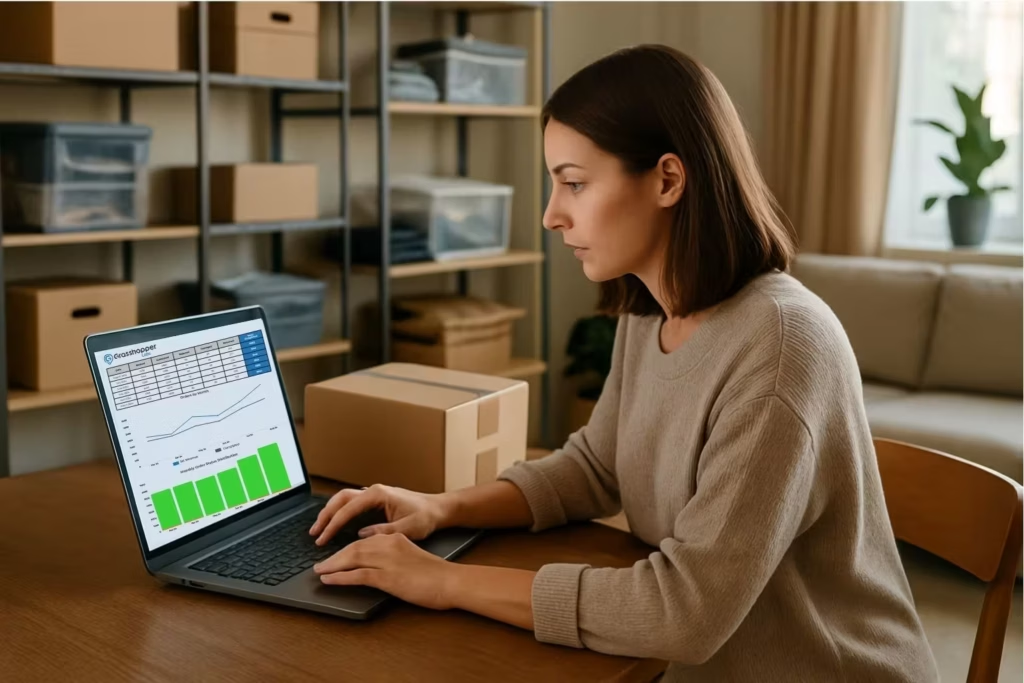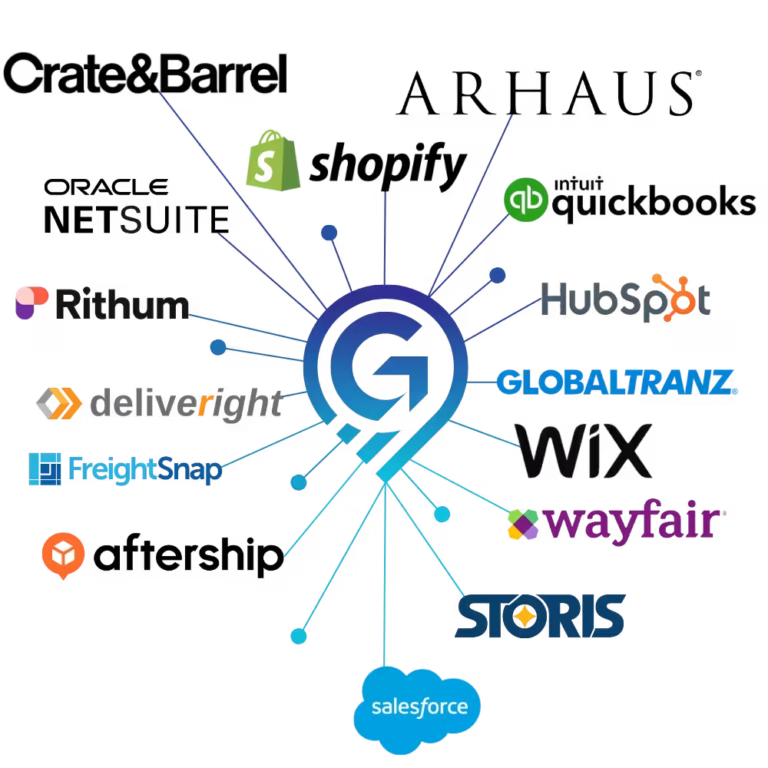Retail Logistics Software That Helps You Exceed Customer Expectations
Customers expect to know when their order will arrive, receive timely updates, and feel confident that their purchase will show up exactly as promised. Meeting these expectations requires retail logistics software that connects every part of the supply chain on a single platform.
Summary:
- Retail logistics software improves tracking and communication.
- A retail inventory system ensures accuracy and enables fast deliveries.
- Automated, branded updates drive loyalty and repeat sales.
Connecting Every Step From Inventory to Delivery
By integrating delivery tracking, automated updates, branded communications, and intelligent route planning, retailers can transform the delivery experience into a powerful driver of customer loyalty and repeat sales.
But delivery is only one part of the story. To keep up with rising demand, retailers also need a strong foundation in inventory and order management. Pairing a retail inventory system with advanced logistics tools ensures that products are in stock, orders are accurate, and customers stay happy from checkout to delivery.
Why Delivery Experience Matters More Than Ever
Retailers spend significant time and money building brand trust through marketing, product quality, and tireless customer service.
But the delivery process is often where that trust is either reinforced—or lost.
Consider this: a customer orders a new sofa. The online shopping experience is smooth, but the delivery is late, communication is vague, and the driver arrives without notice. Even though the retailer may not be directly responsible for the poor delivery experience, the customer still places blame on the retailer.
On the other hand, if that same customer receives branded updates, has access to real time delivery tracking, and experiences an on-time, well-communicated delivery, their perception of the retailer improves dramatically. That positive experience is what drives repeat business.
In short: delivery is part of the product, and retailers who get it right stand out in a competitive market.
Features to Look for in Retail Logistics Software
Not all solutions are created equal. To keep customers informed and operations running smoothly, retailers need their logistics solution to have certain capabilities:
1. Real-Time Delivery Tracking
Customers want transparency. By giving shoppers the ability to see exactly where their order is, retailers reduce “where’s my order?” (WISMO) calls and create a more confident buying experience. For operations teams, tracking helps monitor performance, resolve issues quickly, and ensure deliveries stay on schedule.
2. Automated Customer Updates
No one wants to sit around all day waiting for a delivery. Automated notifications—such as “Your order is on the way” or “Your delivery is scheduled between 2–4 pm”—give customers peace of mind and reduce the burden on support teams.
3. Branded Communications
Every touchpoint with the customer is a chance to reinforce the retailer’s brand. Branded delivery emails, texts, and tracking pages ensure that communications look and feel like they’re coming from the retailer—not a third-party carrier. This builds trust and strengthens the retailer–customer relationship.
4. Delivery Route Planning
Efficiency on the road directly impacts customer satisfaction. By using AI-powered delivery route planning, retailers can ensure drivers take the most efficient routes, reducing delays and cutting costs. Optimized routing means fewer missed delivery windows and more satisfied customers.
How Logistics Software Supports Retail Growth
Beyond the immediate customer-facing benefits, retail logistics software also plays a critical role in helping retailers grow and scale.
- Operational efficiency: Automated routing, tracking, and communications reduce manual, time consuming tasks.
- Cost control: Better route planning and fewer failed deliveries lower operational costs.
- Scalability: With systems in place, retailers can handle higher order volumes without sacrificing service quality.
- Data insights: Retailers gain visibility into delivery performance, customer satisfaction trends, and operational bottlenecks—all essential for continuous improvement.
For retailers trying to balance rising customer expectations with tight margins, these benefits can be the difference between growth and falling behind the pack.
The Role of a Retail Inventory System
While logistics software ensures smooth deliveries, a retail inventory system makes sure the right products are available in the first place. Customers can’t have a great delivery experience if the item they want is out of stock or delayed because of poor inventory management.
A robust inventory system helps retailers:
- Maintain accurate stock levels across warehouses and stores.
- Integrate all sales & logistics software on a single platform.
- Prevent stockouts and overstocks, protecting both revenue and customer trust.
- Improve demand forecasting using real-time and historical data.

When logistics and inventory systems work together, retailers achieve true end-to-end visibility—from the moment a customer clicks “buy” to the moment their order arrives at the door.
Building Customer Loyalty Through Technology
Don’t underestimate how much the delivery process impacts repeat sales. Multiple studies show a significant percentage of customers stop buying from a retailer after just one poor delivery experience. Conversely, a positive delivery experience increases the likelihood of customers returning—and telling others about their experience.
Powerful delivery stats for retailers should know:
- Customers are 21% more likely to repurchase if they’re satisfied with just the last-mile logistics
- 83% of customers want an electronic proof of delivery (ePOD)
- 80% want easy-to-use tracking
- 68% want flexible delivery times
Technology plays a central role here. By using retail logistics software integrated with a retail inventory system, retailers can deliver consistency, transparency, and reliability at scale.
Other Features That Add Value for Retailers
In addition to delivery tracking and inventory management, advanced logistics platforms often include other features that add value:
- Returns management: Simplifying how customers return items helps protect loyalty.
- Cycle count tools: Ensure inventory accuracy without shutting down operations.
- Analytics dashboards: Provide insights into delivery performance, inventory turnover, and customer satisfaction.
- Carrier integrations: Connect with multiple delivery partners to expand coverage while maintaining centralized control.
These tools ensure retailers have the flexibility to adapt quickly—whether that’s handling seasonal demand spikes or scaling into new markets.
Integrated Technology from Cart to Doorstep
The market is full of software providers, but not all are uniquely designed with retailers in mind. The best retail logistics software gives retailers what they actually need by including features that bridge the gap between order management, inventory & fulfillment, and last mile delivery.
When evaluating a solution, retailers should ask:
- Does it integrate with your existing sales channels?
- Can it handle inventory & logistics in one platform?
- Does it have automated branded communications and customer tracking tools?
- Will it scale as order volume increases?
A solution that checks all of these boxes positions retailers to not only meet current demand but also stay ahead of future expectations.
And that’s the foundation of sustainable growth.

The Future of Retail Logistics
Retail is changing quickly, and customer expectations aren’t slowing down. Shoppers demand speed, accuracy, and visibility—and they’re not afraid to switch brands if those expectations aren’t met.
Delivery isn’t just the last step in the process—it’s a defining part of the brand experience.
By investing in retail logistics software that connects delivery, communications, and routing with a robust retail inventory system, retailers can deliver on these expectations consistently. The result is fewer operational headaches, lower costs, and most importantly, stronger customer loyalty.
Retailers who recognize this and embrace the right technology will be the ones who win repeat business and thrive in an increasingly competitive market.


